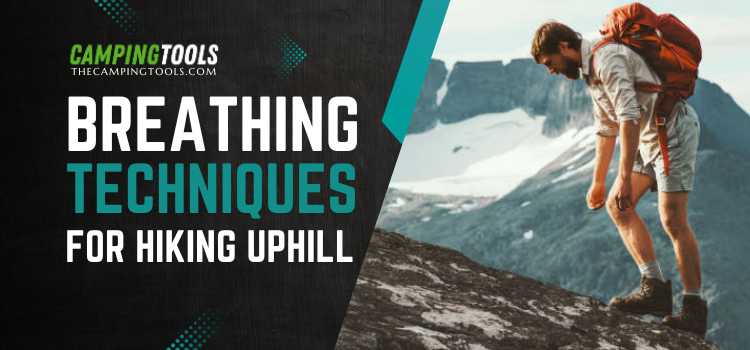Hiking uphill can be a challenging and rewarding experience. It not only provides physical benefits such as improved cardiovascular health and increased endurance but also allows for mental rejuvenation and connection with nature.
However, hiking uphill requires a different level of exertion compared to walking on flat terrain. In order to sustain the climb and prevent fatigue and injury, it is important to develop an effective breathing technique. In this article, we will discuss some breathing techniques for hiking uphill.
What is Hiking Uphill and What are Its Benefits

Hiking uphill, also known as hill climbing or trekking, involves walking up a slope or incline. This type of hiking requires more effort and can be more physically demanding due to the increased incline.
The benefits of hiking uphill are numerous. It helps to improve cardiovascular health and increase endurance, leading to better overall fitness. Hiking also allows for mental relaxation and stress relief, as well as a sense of accomplishment upon reaching the summit.
Developing an Effective Breathing Technique for Hiking Uphill
In order to maintain a steady pace and conserve energy while hiking uphill, it is crucial to focus on breathing deeply. This not only helps to provide oxygen to your muscles but also helps to regulate your heart rate and prevent fatigue.
Another important aspect of proper breathing technique is to avoid holding your breath. Many hikers tend to hold their breath when faced with a challenging incline, which can lead to dizziness and fatigue. Instead, try to take deep breaths in through your nose and out through your mouth as you climb.
Additionally, it is important to not rush through your steps while hiking uphill. This can cause shortness of breath and lead to exhaustion. Take slow, deliberate steps and focus on maintaining a steady breathing rhythm.
Tips to Increase Endurance and Stamina When Hiking Upward
There are a few techniques and strategies that can help increase your endurance and stamina when hiking uphill. One effective method is to use visualization techniques. This involves picturing yourself successfully reaching the summit and focusing on positive thoughts to keep you motivated.
Pacing yourself properly is also crucial when hiking uphill. It is important to find a pace that allows you to maintain a steady breathing pattern and conserve energy. Pushing yourself too hard in the beginning can lead to burnout later on.
In addition, it is important to adapt to the terrain while hiking uphill. If you encounter steep inclines or rocky paths, adjust your pace accordingly and focus on maintaining proper breathing techniques.
How to Avoid Injury When Hiking Uphill
Proper breathing techniques can also help prevent injury while hiking uphill. However, there are other precautions that should be taken as well.
One important factor is maintaining proper posture while hiking. This means keeping your shoulders back, chest open, and head up. This not only helps with breathing but also prevents strain on your muscles and joints.
Choosing the right footwear is also crucial when it comes to avoiding injury. Make sure to wear comfortable, supportive shoes that provide good traction. This will help with stability and prevent slips or falls.
Stretching Exercises for Hikers (Techniques for Hiking Uphill)
Before embarking on a hike, it is important to properly warm up your muscles with some stretching exercises. This will not only help prevent injuries but also improve your overall performance while hiking.
Some stretches that are particularly beneficial for hikers include calf stretches, quad stretches, and hamstring stretches. Make sure to hold each stretch for at least 15-30 seconds and avoid bouncing or overstretching.
Hydration and Nutrition for Uphill Hikes
Staying hydrated and properly fueling your body is crucial when hiking uphill. It is recommended to drink water before, during, and after your hike to replenish lost fluids. Consider carrying a water bottle with you on your hike or using a hydration pack or a complete kit.
In terms of nutrition, it is important to consume high-energy foods that will sustain you throughout the hike. Some good options include trail mix, energy bars, and fruits such as bananas or apples.
Preparing Your Body for Climbing Hills
In addition to incorporating deep breathing and practicing proper technique, it is also important to prepare your body for the physical demands of hiking uphill. This can include regular cardiovascular exercise, strength training, and endurance building activities.
It is best to start gradually and increase intensity over time to avoid strain or injury. Consulting with a fitness professional or experienced hiker can also be helpful in creating a personalized training plan.
Common Mistakes People Make While Climbing Hills
While hiking uphill may seem like a simple task, there are some common mistakes that people make that can hinder their performance or even lead to injury. These include:
- Not taking breaks: It is important to listen to your body and take short breaks when needed. Trying to push through without rest can lead to exhaustion and strain.
- Overestimating your abilities: It is important to know your limits and start with a manageable route. Trying to tackle a difficult hike without proper training or experience can be dangerous.
- Not using trekking poles: Trekking poles can provide added stability and support when hiking uphill, helping you conserve energy and prevent falls.
Safety Precautions for Climbing Uphill
While hiking uphill can be a rewarding experience, it is important to take necessary safety precautions to avoid any potential hazards. These may include:
- Checking weather conditions before heading out and avoiding hikes during extreme weather.
- Informing someone of your hike itinerary and estimated return time.
- Carrying a first aid kit and knowing basic first aid in case of emergencies.
- Staying on marked trails and being aware of any potential dangers such as rock slides or steep drops.
Benefits of Incorporating Deep Breathing Into Your Uphill Hike
Breathing is often taken for granted, but it plays a crucial role in our overall well-being and performance. When hiking uphill, incorporating deep breathing techniques can have several benefits, including:
- Increased oxygen intake: Deep breathing allows for more oxygen to enter the body, providing your muscles with the necessary fuel to keep going.
- Release of tension and stress: Focusing on deep breaths can help calm the mind and release any tension or stress you may be feeling during a challenging hike.
- Improved endurance: By focusing on your breathing, you can pace yourself better and increase your endurance, allowing you to hike uphill for longer periods.
- Better oxygen utilization: Deep breathing helps improve the body’s ability to use oxygen efficiently, which can help reduce fatigue and improve overall performance.
Conclusion: Breathing Techniques for Hiking Uphill
Hiking uphill may seem intimidating, but with the right techniques and precautions, it can be a rewarding and enjoyable experience. Remember to focus on your breathing, stay hydrated and nourished, and listen to your body’s signals. With practice and proper preparation, you can conquer any uphill hike with ease.
So next time you hit the trails, don’t forget to incorporate these breathing techniques and reap the benefits they have to offer.
Happy Hiking!
FAQs About Breathing Techniques for Hiking Uphill
How do you breathe when hiking uphill?
When hiking uphill, it’s essential to adopt a breathing technique that maximizes oxygen intake and minimizes fatigue. Focus on deep diaphragmatic breathing rather than shallow chest breathing. Inhale slowly and deeply through your nose, allowing your diaphragm to expand fully, and exhale gradually through your mouth. Maintain a steady rhythm, syncing your breath with your steps to optimize oxygen flow to your muscles.
What is the best breathing pattern for hiking?
The best breathing pattern for hiking involves rhythmic and controlled breaths. Consider adopting a 3:3 or 4:4 breathing pattern, inhaling for three or four steps and exhaling for the same number of steps. This synchronization helps regulate your breathing with your pace, optimizing oxygen intake and reducing the likelihood of hyperventilation. Experiment with different patterns to find what suits your comfort and energy levels best.
How can I breathe easier while hiking?
To breathe easier while hiking, focus on proper posture and controlled breathing. Maintain an upright posture to allow your lungs to fully expand. Engage your core muscles to support your spine. Adopt a steady and deliberate breathing rhythm, avoiding shallow breaths. If you find yourself getting winded, consider slowing your pace, taking short breaks, and practicing deep diaphragmatic breathing. Additionally, staying well-hydrated and acclimating to higher altitudes gradually can contribute to easier breathing during hikes.






